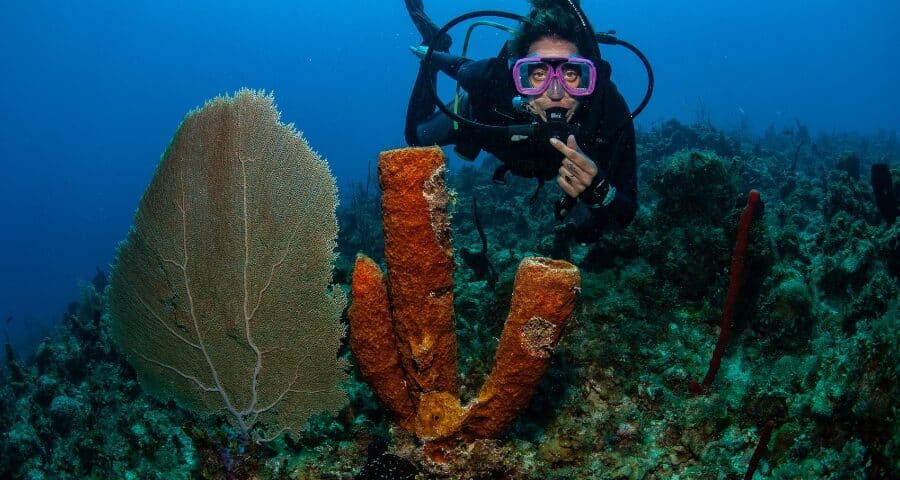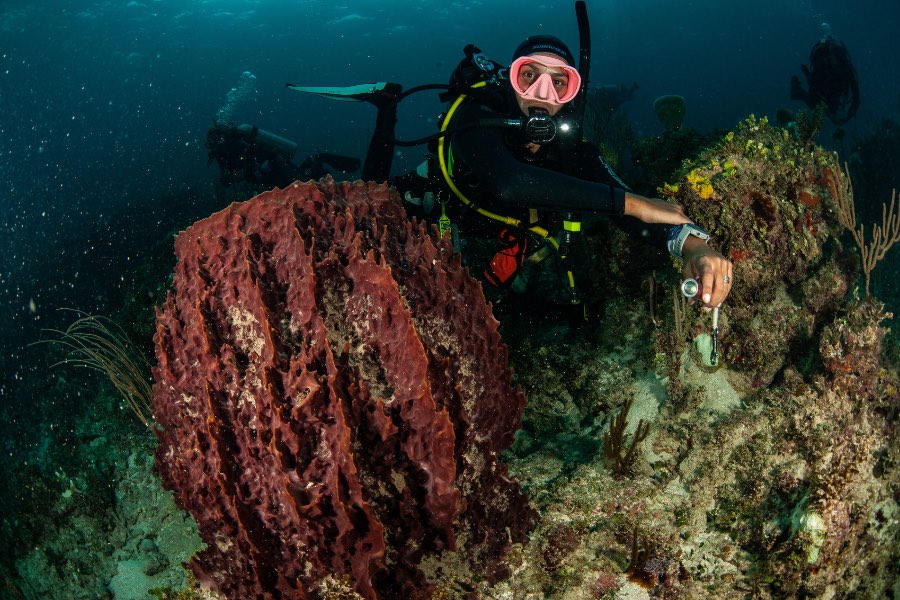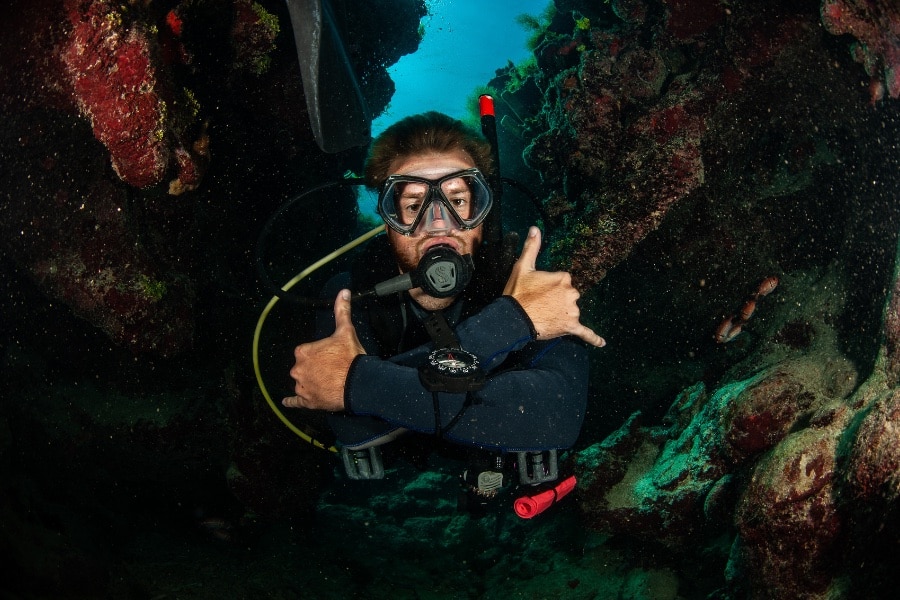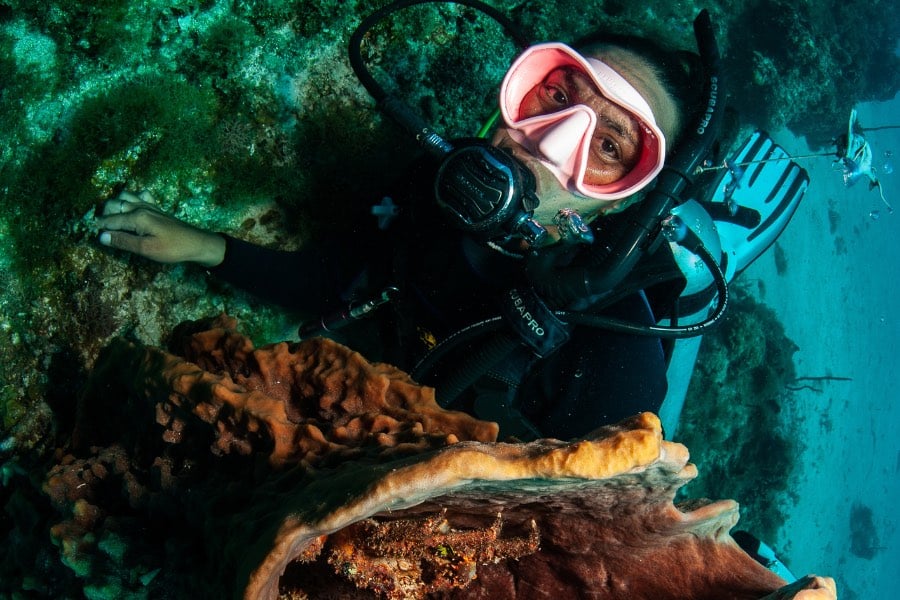Current diving is fantastic, incredible, like flying in the middle of the ocean. In fact, it’s the most common form of diving in Cozumel, and we practice it every day at Dressel Divers. Based on our experience, we wrote the article “Drift Diving: 5 Tips to Enjoy it to the Fullest.” But today we’re going to talk about diving in vertical currents, a type of underwater current that no diver seeks out. You come across these by chance.
I remember once diving with my wife in Sharm el Sheikh, Egypt. Specifically, we were current diving at Yolanda Reef. There is a crack there that goes around Ras Mohamed. Ras Mohamed is a wall that drops 800 meters almost straight down. When we reached the crack, there were about 5,000 large red fish standing at the mouth of the crevice. What a sight! We were so amazed that we didn’t realize the current was splitting in two: one upward current and one downward current. We went through the crack and “Whoooops!” it swallowed us. In the blink of an eye, the depth gauge indicated 40 m/130 ft. At that moment, I looked at my wife and gave her the thumbs up: “Up!”. We kicked to ascend, checked the depth gauge: still 40 meters.
- “What did I tell you? Ascend!” – I signaled to her.
- “I know, what do you think I’m doing?” – She gestured back.
Yes, couples have the gift of arguing underwater. The thing was, no matter how much we kicked to ascend, we weren’t moving. In the end, we grabbed onto the wall. We literally climbed out of there.
That day we learned that:
- We can’t forget that things can change underwater.
- Vertical currents are one of those unexpected changes.
- Knowing why they occur will help you predict and avoid them.
- Knowing how to react if you ever find yourself in a downdraft or upward current will help you get out of them safely.
That’s why we wrote this article.










